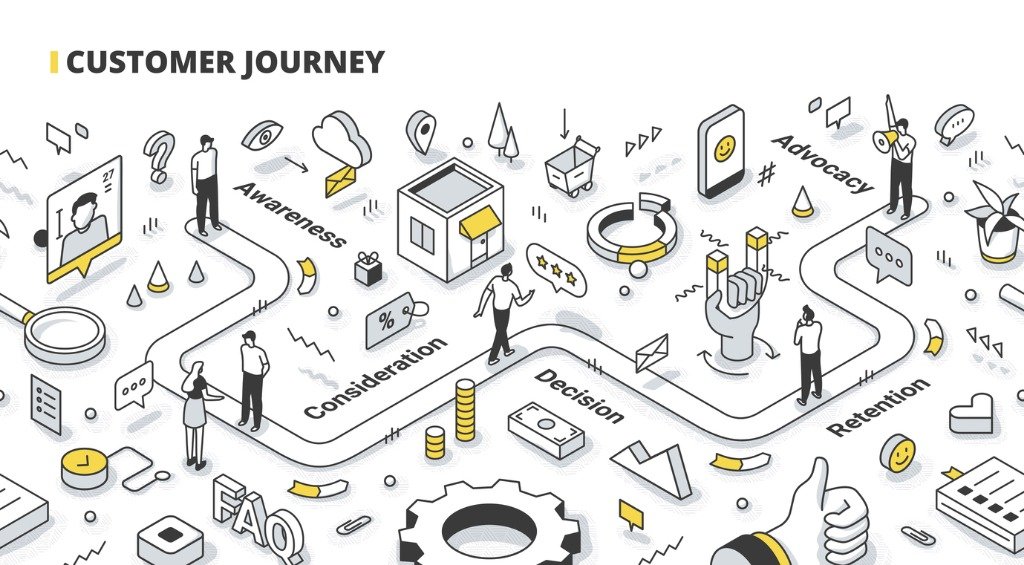Decoding Consumer Insights
The art of consumer insights lies in transforming raw data into meaningful stories—stories that can guide product development, marketing strategies, and ultimately, business growth.
Market research has transformed from a simple data-collection exercise to a nuanced, strategic discipline. Modern organizations recognize that truly understanding consumers requires a sophisticated approach that goes far beyond basic demographic categorization.
The most compelling consumer insights emerge when researchers create a multidimensional portrait of their audience. This means looking not just at who people are, but understanding their motivations, behaviors, lifestyle preferences, and underlying psychological drivers. Imagine consumer research as creating a detailed, living map of human experience—each segment representing a unique terrain of needs, desires, and potential interactions with a product or service.
Consider the complexity of consumer segmentation. Traditional approaches might simply divide people by age or income. However, advanced methodologies now layer multiple dimensions: behavioral patterns intersect with attitudinal characteristics, while consumption habits are analyzed alongside psychological profiles. A wellness-focused consumer might look very different from a price-sensitive buyer, despite sharing similar demographic markers.
The most effective research integrates diverse data sources to create these rich consumer narratives. Syndicated market data, shopper panel insights, retail partner information, and custom research tools are woven together to create a comprehensive understanding. This isn't just about collecting data—it's about creating a dynamic, living model of consumer behavior that can inform strategy across an entire organization.
Technology and analytical tools have become critical in this process. Sophisticated techniques like MaxDiff analysis, conjoint studies, and advanced statistical modeling allow researchers to uncover nuanced insights that weren't previously detectable. Machine learning and AI are pushing these boundaries even further, enabling more predictive and adaptive consumer understanding.
Strategic implementation is where these insights truly come to life. The goal isn't just to understand consumers, but to transform that understanding into actionable strategies. This might mean developing targeted cross-sell approaches, informing product innovation, creating precise marketing campaigns, or identifying entirely new market opportunities.
Successful organizations treat consumer insights as a continuous journey of discovery. They implement regular performance tracking, replicate segmentation models across different platforms, and remain committed to constantly refining their understanding. The most agile companies view consumer research not as a one-time project, but as an ongoing dialogue with their market.
As we look to the future, the most successful approaches to consumer insights will be those that combine technological sophistication with genuine human empathy. It's about creating a holistic view that respects the complexity of human behavior while providing clear, strategic direction.
The art of consumer insights lies in transforming raw data into meaningful stories—stories that can guide product development, marketing strategies, and ultimately, business growth.
The Power of a Positive Mental Attitude: Overcoming Self-Doubt
Confidence isn’t about never feeling doubt; it’s about not letting doubt control you. Rebuilding self-assurance after a setback takes time, but maintaining a positive mental attitude is the key to seeing your value, even when circumstances try to obscure it.
Losing a job can be a deeply unsettling experience. It disrupts your routine, challenges your sense of purpose, and, for many, shakes your confidence to the core. Since being laid off, I’ve struggled with imposter syndrome and a nagging lack of confidence—two formidable obstacles that can feel impossible to overcome. But through this journey, I’ve realized that cultivating a positive mental attitude (PMA) is not just a motivational cliché; it’s an essential tool for rebuilding and moving forward.
The Weight of Self-Doubt
When you’re suddenly without a job title, it’s easy to start questioning your worth. Thoughts like "Was I ever really good at my job?" or "Did I just get lucky?" creep in, distorting reality and making it harder to see your own value. Imposter syndrome feeds on these doubts, convincing you that your successes were flukes rather than the result of your skills, experience, and hard work.
The Shift to Positivity
Adopting a positive mental attitude doesn’t mean ignoring challenges or pretending everything is fine. It means choosing to focus on opportunities rather than setbacks, resilience rather than failure, and self-belief rather than self-doubt. Here’s how I’ve been working to shift my mindset:
1. Reframing Negative Thoughts
Instead of dwelling on what I lost, I remind myself of what I gained: experience, knowledge, and a network of colleagues who respect my work. Each challenge presents an opportunity to grow.
2. Affirming My Strengths
Every day, I make it a point to acknowledge at least one thing I’m good at. Whether it’s strategic thinking, creativity, or leadership, these reminders help reinforce my confidence.
3. Surrounding Myself with Positivity
Connecting with mentors, friends, and peers who uplift and support me has been invaluable. Their encouragement helps drown out the voice of doubt.
4. Setting Small, Achievable Goals
Rather than being paralyzed by the uncertainty of what’s next, I focus on taking small steps—whether it’s networking, learning a new skill, or applying for one job at a time.
Moving Forward
Confidence isn’t about never feeling doubt; it’s about not letting doubt control you. Rebuilding self-assurance after a setback takes time, but maintaining a positive mental attitude is the key to seeing your value, even when circumstances try to obscure it. If you’re going through something similar, know that you’re not alone—and that your worth isn’t defined by any single moment, but by the entirety of who you are and what you bring to the table.
The Evolving Landscape of Content Marketing
When executed effectively, content marketing not only fuels the sales funnel but also builds long-term brand authority and a stellar reputation, ultimately turning customers into loyal advocates.
We are still in an era of digital transformation; content marketing has shifted from a supplementary brand effort to a core business strategy. No longer confined to blog posts and social media updates, today’s content must be intentional, strategic, and aligned with the entire sales funnel. The traditional approach of simply generating awareness is no longer enough—brands must attract, educate, differentiate, and activate their audiences to drive meaningful engagement, conversions, and long-term loyalty.
Attract: Capturing Attention in a Saturated Market
In an age where consumers are bombarded with content from every direction, breaking through the noise is more challenging than ever. Brands must create compelling, data-driven, and audience-first content that resonates. Whether through SEO-driven blog posts, engaging social media storytelling, or viral video campaigns, attraction hinges on understanding what motivates and inspires potential customers. The goal is to position the brand as a thought leader, drawing people in with authenticity and value rather than overt sales pitches.
Key Tactics:
Leveraging search engine optimization (SEO) to ensure discoverability
Utilizing social media to build brand presence and engagement
Crafting attention-grabbing headlines and visuals that stop the scroll
Investing in partnerships with influencers and industry leaders
Educate: Building Trust and Brand Authority
Once a brand has captured attention, the next step is to nurture that interest by providing valuable insights and solutions. Today’s consumers expect brands to educate them—not just about products, but about industry trends, best practices, and innovative ideas. Educational content strengthens brand authority, demonstrating expertise and building trust with potential customers before they make a purchasing decision.
Key Tactics:
Creating in-depth blog posts, whitepapers, and eBooks that provide value
Hosting webinars and online workshops to engage audiences directly
Developing informative video content, including tutorials and case studies
Offering interactive tools such as quizzes, calculators, and assessments
Differentiate: Standing Out from the Competition
With countless brands competing for the same audience, differentiation is crucial. Content should highlight what sets a brand apart, whether it’s a unique value proposition, superior customer service, or an innovative product feature. Beyond simply stating what makes the brand different, storytelling plays a vital role in emotionally connecting with the audience and fostering brand loyalty.
Key Tactics:
Showcasing customer success stories and testimonials
Using brand storytelling to humanize the company’s mission and values
Developing proprietary research and industry insights
Positioning executives and employees as thought leaders through guest articles and public speaking
Activate: Driving Action and Conversions
The ultimate goal of content marketing is to turn audience engagement into tangible business outcomes. Activation requires a seamless transition from interest to action, whether that’s making a purchase, signing up for a service, or engaging with a sales team. Calls-to-action (CTAs) should be clear, compelling, and aligned with the buyer’s journey, ensuring that prospects know exactly what steps to take next.
Key Tactics:
Implementing lead magnets such as downloadable resources and gated content
Optimizing landing pages with persuasive CTAs and minimal friction
Personalizing email marketing campaigns to nurture leads effectively
Utilizing retargeting ads to re-engage potential customers
A Holistic, Integrated Approach
The modern content marketing landscape demands a full-funnel approach that goes beyond surface-level engagement. Brands must strategically attract, educate, differentiate, and activate their audiences to remain competitive and drive sustainable growth. When executed effectively, content marketing not only fuels the sales funnel but also builds long-term brand authority and a stellar reputation, ultimately turning customers into loyal advocates.




